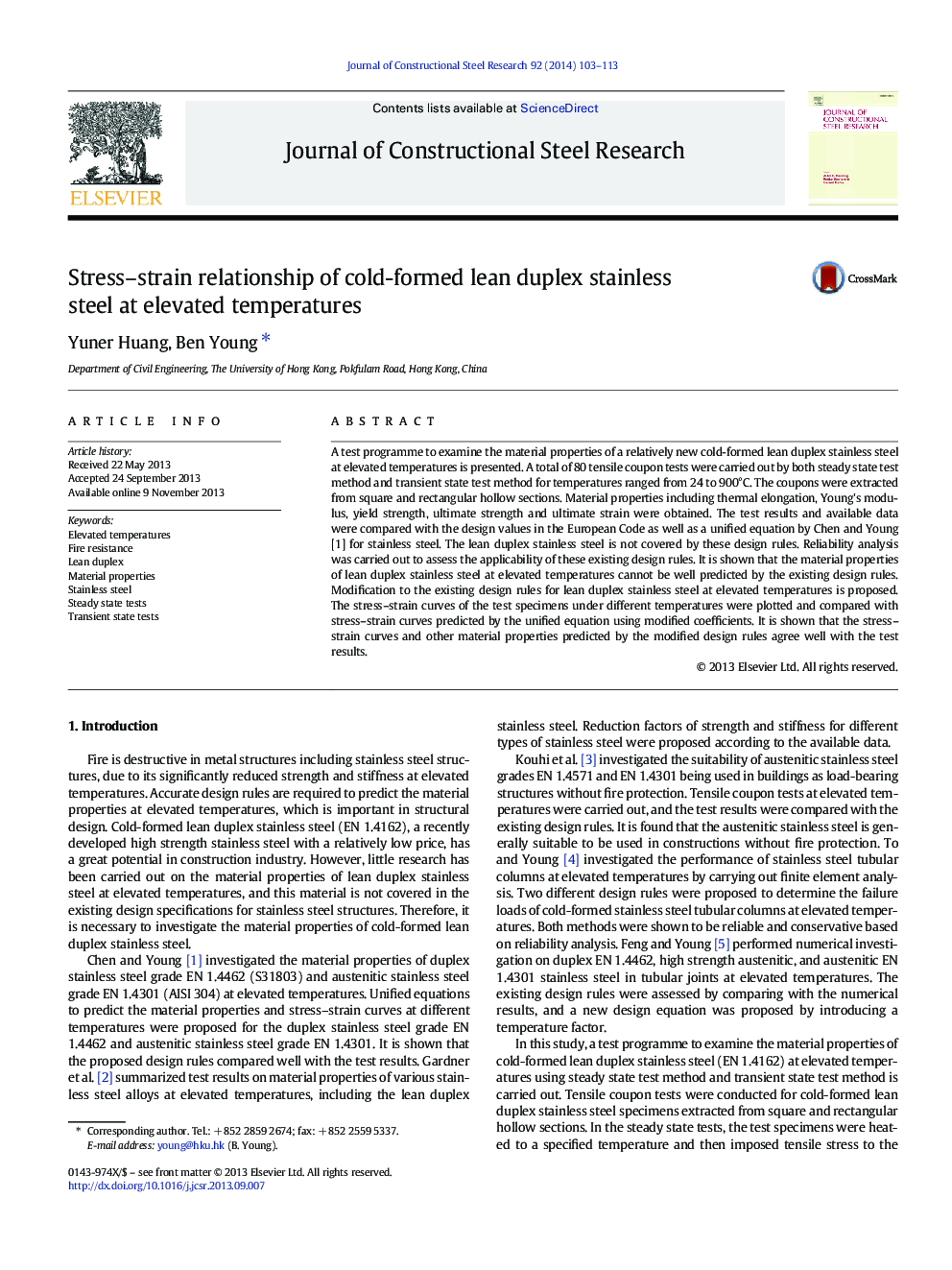| کد مقاله | کد نشریه | سال انتشار | مقاله انگلیسی | نسخه تمام متن |
|---|---|---|---|---|
| 284820 | 509166 | 2014 | 11 صفحه PDF | دانلود رایگان |
• A total of 80 tensile coupon tests of lean duplex stainless steel were conducted.
• Both steady and transient state test methods were used.
• The specimen temperatures ranged from 24 to 900 °C.
• Current design rules are assessed for material properties at elevated temperatures.
• Modified design rules are proposed for lean duplex stainless steel.
A test programme to examine the material properties of a relatively new cold-formed lean duplex stainless steel at elevated temperatures is presented. A total of 80 tensile coupon tests were carried out by both steady state test method and transient state test method for temperatures ranged from 24 to 900 °C. The coupons were extracted from square and rectangular hollow sections. Material properties including thermal elongation, Young's modulus, yield strength, ultimate strength and ultimate strain were obtained. The test results and available data were compared with the design values in the European Code as well as a unified equation by Chen and Young [1] for stainless steel. The lean duplex stainless steel is not covered by these design rules. Reliability analysis was carried out to assess the applicability of these existing design rules. It is shown that the material properties of lean duplex stainless steel at elevated temperatures cannot be well predicted by the existing design rules. Modification to the existing design rules for lean duplex stainless steel at elevated temperatures is proposed. The stress–strain curves of the test specimens under different temperatures were plotted and compared with stress–strain curves predicted by the unified equation using modified coefficients. It is shown that the stress–strain curves and other material properties predicted by the modified design rules agree well with the test results.
Journal: Journal of Constructional Steel Research - Volume 92, January 2014, Pages 103–113
